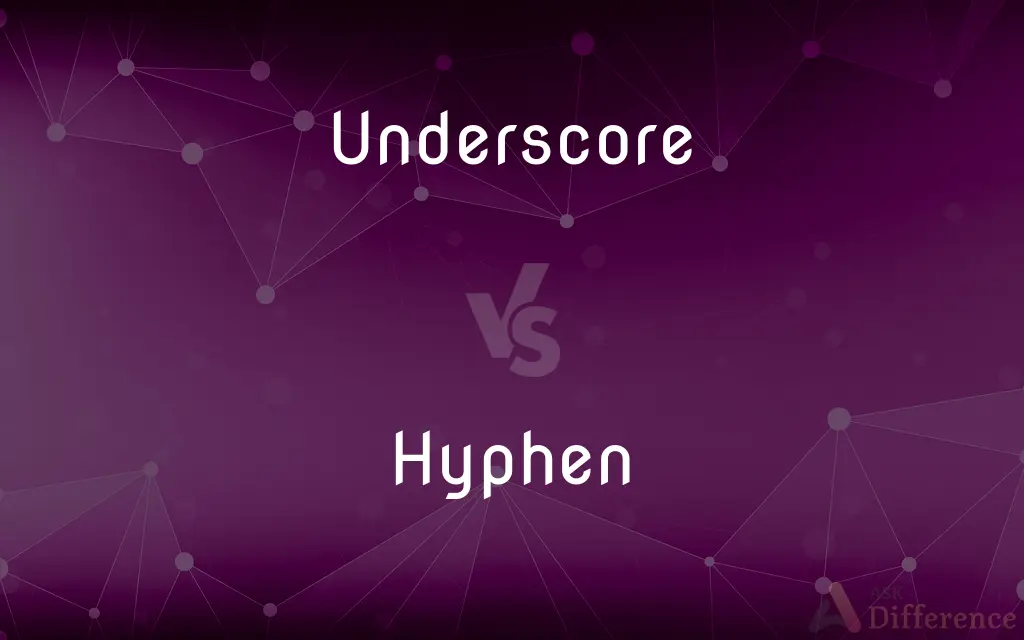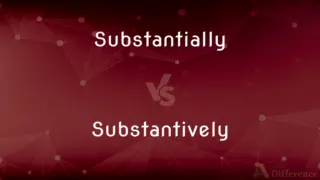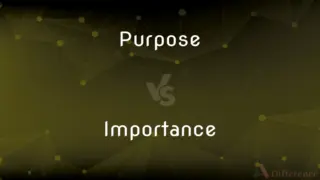Underscore vs. Hyphen — What's the Difference?
By Tayyaba Rehman — Updated on October 28, 2023
Underscore is a line drawn under text; also emphasizes. Hyphen is a short line (-) connecting words or splitting syllables.

Difference Between Underscore and Hyphen
Table of Contents
ADVERTISEMENT
Key Differences
The underscore is a symbol, visually represented as a horizontal line (_) that can be found below letters or numbers. It's predominantly used in digital contexts, such as email addresses or file names, where spaces aren't permitted. The hyphen, conversely, is a shorter horizontal line (-) used within sentences to combine words or break up syllables.
In the realm of emphasis, the term underscore also carries a figurative meaning, indicating the stressing or emphasizing of a point or idea. In contrast, the hyphen doesn't bear this symbolic weight. Instead, it serves to clarify compound words like "mother-in-law" or to divide words at line breaks.
For programmers or those in IT, the underscore is familiar, often used in variable names or filenames, ensuring no gaps exist. The hyphen is less common in this world, as it can sometimes be interpreted as a minus sign by coding languages, potentially causing confusion.
In typography, underscores often serve as blanks, filling in spaces for items like forms, indicating where one should provide information. Hyphens, on the other hand, have a role in ensuring clarity in written language, preventing misinterpretation of terms like "re-sign" (sign again) vs. "resign" (quit).
It's pivotal to note the underscore and hyphen are not interchangeable. While both are horizontal lines, their uses and implications are distinct. Mistaking an underscore for a hyphen or vice versa, especially in digital contexts, can lead to significant misunderstandings or errors.
ADVERTISEMENT
Comparison Chart
Primary Use
Underlining text; digital spacing without gaps
Connecting words; splitting syllables
Figurative Meaning
Emphasizing a point
None
Context
Predominantly digital, like email addresses
Written language
Length
Typically longer than a hyphen
Shorter than an underscore
Interchangeability
Not interchangeable with hyphens
Not interchangeable with underscores
Compare with Definitions
Underscore
A line drawn below characters.
*Fill in the blank spaces marked with an underscore._
Hyphen
A punctuation mark used to join words.
She has a well-established reputation.
Underscore
A symbol used in place of spaces in digital contexts.
Her email address is [email protected].
Hyphen
A mark used to split syllables in a word.
The word co-operate contains a hyphen.
Underscore
A figurative term meaning to emphasize.
He underscored the importance of timely submission.
Hyphen
A tool ensuring clarity between similar words.
Without a hyphen, re-sign could be mistaken for resign.
Underscore
A typographical element to indicate blanks.
The form had underscores for the user's details.
Hyphen
A symbol used to indicate a word break at the end of a line.
The word attention was split with a hyphen due to space constraints.
Underscore
A symbol used in programming and coding.
*The variable name user_input contains an underscore._
Hyphen
A punctuation mark used in compound terms.
She is my mother-in-law.
Underscore
An underscore, also called an underline, low line or low dash, is a line drawn under a segment of text. In proofreading, underscoring is a convention that says "set this text in italic type", traditionally used on manuscript or typescript as an instruction to the printer.
Hyphen
The hyphen ‐ is a punctuation mark used to join words and to separate syllables of a single word. The use of hyphens is called hyphenation.
Underscore
To underline
Underscored the incorrect answers in red ink.
Hyphen
A punctuation mark ( - ) used between the parts of a compound word or name or between the syllables of a word, especially when divided at the end of a line of text.
Underscore
To put emphasis on; stress
In a press release, the leaders underscored their commitment to continued negotiations.
Hyphen
To hyphenate.
Underscore
To cause to appear important or deserving of attention
The energy crisis underscored the need to increase fuel efficiency.
Hyphen
The symbol "‐", typically used to join two or more words to form a compound term, or to indicate that a word has been split at the end of a line.
Underscore
A line drawn under writing or text to indicate emphasis or italic type.
Hyphen
(figuratively) Something that links two more consequential things.
Underscore
An underline; a line drawn or printed beneath text; the character _.
Hyphen
An enclosed walkway or passage that connects two buildings.
Underscore
(music) A piece of background music.
Hyphen
Someone who belongs to a marginalized subgroup, and can therefore described by a hyphenated term, such as "German-American", "female-academic", etc.
Underscore
To underline; to mark a line beneath text.
Hyphen
To separate or punctuate with a hyphen; to hyphenate.
Underscore
To emphasize or draw attention to.
I wish to underscore the importance of proper formatting.
Hyphen
Used to emphasize the coordinating function usually indicated by the punctuation "-".
Underscore
To draw a mark or line under; to underline.
Hyphen
A mark or short dash, thus [-], placed at the end of a line which terminates with a syllable of a word, the remainder of which is carried to the next line; or between the parts of many a compound word; as in fine-leaved, clear-headed. It is also sometimes used to separate the syllables of words.
Underscore
A line drawn underneath (especially under written matter)
Hyphen
To connect with, or separate by, a hyphen, as two words or the parts of a word.
Underscore
Give extra weight to (a communication);
Her gesture emphasized her words
Hyphen
A punctuation mark (-) used between parts of a compound word or between the syllables of a word when the word is divided at the end of a line of text
Underscore
Draw a line or lines underneath to call attention to
Hyphen
Divide or connect with a hyphen;
Hyphenate these words and names
Common Curiosities
Why would I use an underscore in programming?
Underscores in programming can replace spaces, which are often not allowed in variable or function names.
Is a hyphen the same as a dash?
No, a hyphen is shorter than a dash and has distinct grammatical uses.
How do I know when to hyphenate a word?
Generally, hyphenate compound words or terms that might be unclear without the hyphen.
What's the key difference between an underscore and a hyphen?
An underscore (_) is primarily a space replacement, while a hyphen (-) connects words or splits syllables.
How has the use of the hyphen evolved?
Some words that were once hyphenated are now often written as single words or with spaces.
Why is the hyphen essential in written English?
The hyphen can clarify the meaning of compound words and prevent misunderstandings.
Are underscores common in website URLs?
Hyphens are more common in URLs, but underscores are sometimes used.
Can I use an underscore in my email address?
Yes, underscores are commonly used in email addresses.
Can I use a hyphen in my email address?
Yes, hyphens are permissible in email addresses.
In which context is the underscore more prevalent than the hyphen?
In digital settings, like email addresses or filenames, underscores are more common.
Does an underscore emphasize text like bold or italics?
Visually, no. But figuratively, to "underscore" means to emphasize.
Do other languages use underscores and hyphens?
Yes, many languages use these symbols, though their rules and usage might differ.
Do underscores have a role in academic writing?
Rarely. Underscores are more prevalent in digital contexts than in academic writing.
Is the underscore a modern invention?
While its digital usage is modern, the symbol has older typographical origins.
Are there any controversies associated with the use of hyphens?
The omission or inclusion of hyphens can sometimes change word meanings, leading to debates on correct usage.
Share Your Discovery

Previous Comparison
Substantially vs. Substantively
Next Comparison
Purpose vs. ImportanceAuthor Spotlight
Written by
Tayyaba RehmanTayyaba Rehman is a distinguished writer, currently serving as a primary contributor to askdifference.com. As a researcher in semantics and etymology, Tayyaba's passion for the complexity of languages and their distinctions has found a perfect home on the platform. Tayyaba delves into the intricacies of language, distinguishing between commonly confused words and phrases, thereby providing clarity for readers worldwide.
















































